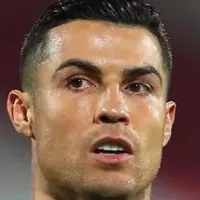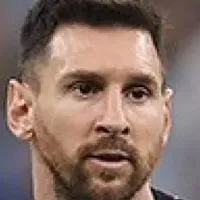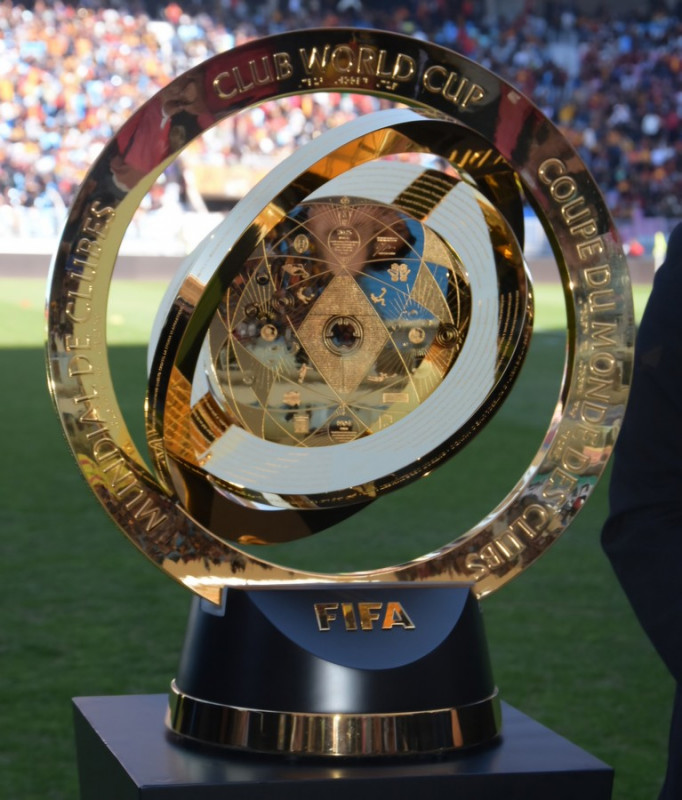The FIFA Club World Cup is an international men's football competition organized by FIFA. It began in 2000 as the FIFA Club World Championship, but after cancellation from 2001-2004 due to the collapse of FIFA's marketing partner, it returned in 2005 as an annual event until 2023. The tournament was then revamped into a quadrennial competition starting in 2025. The prestige and importance of the Cup has been a recurring subject of discussion.
1909: Sir Thomas Lipton Trophy held in Italy
In 1909, the Sir Thomas Lipton Trophy, considered the first attempt at creating a global club football tournament, was held in Italy.
1911: Sir Thomas Lipton Trophy held in Italy
In 1911, the Sir Thomas Lipton Trophy, considered the first attempt at creating a global club football tournament, was held in Italy.
1930: FIFA invitation to World Cup
In 1930 the right to attempt participation at the FIFA World Cup, through FIFA invitation, was open to every FIFA member-country, regardless of the continent where it was located
1934: FIFA World Cup qualification process
Since 1934 the right to attempt participation at the FIFA World Cup, through qualification process, was open to every FIFA member-country, regardless of the continent where it was located.
1952: Pequeña Copa del Mundo tournament
Between 1952 and 1957, the Pequeña Copa del Mundo, a tournament held in Venezuela, took place.
1952: Fluminense wins second edition of Copa Rio
In 1952, Fluminense won the second edition of the Copa Rio, but it was hailed as a World Champions Cup by a minority of the Brazilian press.
1953: Vasco da Gama wins new cup after Copa Rio extinguished
In 1953, Vasco da Gama won a new cup after Copa Rio was extinguished by the Brazilian FA.
1956: Real Madrid played Pequeña Copa del Mundo
In 1956, Real Madrid played the Pequeña Copa del Mundo, but confirmed their participation in the Venezuelan tournament before becoming European champions.
1957: Pequeña Copa del Mundo tournament
Between 1952 and 1957, the Pequeña Copa del Mundo, a tournament held in Venezuela, took place.
1957: Tournoi de Paris first played
In 1957, the Tournoi de Paris was first played, featuring Vasco da Gama beating Real Madrid 4–3 in the final.
October 1958: Creation of contest with endorsement from UEFA and CONMEBOL
On October 8, 1958, the Brazilian FA President João Havelange announced the decision to create the "best of Europe X best of South American" club contest with endorsement from UEFA and CONMEBOL: the Copa Libertadores, the CONMEBOL-endorsed South American equivalent of the UEFA-endorsed European Cup, and the Intercontinental Cup, the latter being a UEFA/CONMEBOL-endorsed "best club of the world" contest between the champion clubs of both confederations.
1958: Club tournaments in Caracas
From 1958 onwards, other club tournaments were held in Caracas and were often referred to by the name of the original 1952–1957 Pequeña Copa del Mundo tournament.
1960: FIFA authorizes International Soccer League
In 1960, FIFA authorized the International Soccer League, created along the lines of the 1950s Copa Rio, with a view to creating a Club World Cup, with ratification from Stanley Rous, who then had become FIFA president. In the same year, the Intercontinental Cup rose to existence.
1960: Real Madrid wins first Intercontinental Cup
In 1960, Real Madrid won the first Intercontinental Cup and titled themselves world champions.
1961: FIFA objected Real Madrid title
In 1961, FIFA stated that they would prohibit the 1961 Intercontinental Cup edition to be played out unless the organisers regarded the competition as a friendly or a private match between two organisations.
1961: CONCACAF created
In 1961, the North and Central America confederation, CONCACAF, was created to include its clubs in the Copa Libertadores and, by extension, the Intercontinental Cup.
1962: CONCACAF Champions' Cup began
In 1962, the CONCACAF Champions' Cup began after their entry into both Copa Libertadores and Intercontinental Cup was rejected.
1967: FIFA asked to regulate Intercontinental Cup
In 1967, FIFA was asked to assess penalties and regulate the Intercontinental Cup due to the brutality of the Argentine and Uruguayan clubs.
1967: FIFA views Intercontinental Cup
In 1967, René Courte, FIFA's General Sub-Secretary, wrote that FIFA viewed the Intercontinental Cup as a "European-South American friendly match", which was confirmed by FIFA president Stanley Rous. Also in 1967, CONCACAF and the Asian Football Confederation requested participation of their champions in the Intercontinental Cup.
1968: Violent finish to Intercontinental Cup
The 1968 Intercontinental Cup finished in a violent fashion.
1969: Violent finish to Intercontinental Cup
The 1969 Intercontinental Cup finished in a violent fashion, with Manchester United manager Matt Busby calling for Argentineans to be banned from competitive football.
1973: L'Equipe volunteers to sponsor Club World Cup
In 1973, French newspaper L'Equipe volunteered to sponsor a Club World Cup contested by the champions of Europe, South America, North America and Africa, but the extreme negativity of the Europeans prevented this from happening.
October 1974: Potential date for Club World Cup
The competition was to potentially take place in Paris between September and October 1974, with an eventual final to be held at the Parc des Princes.
1975: L'Equipe tries again to create Club World Cup
In 1975, L'Equipe tried once again to create a Club World Cup, but the proposal was to no avail.
1977: Mexican clubs demand participation in Intercontinental Cup
After winning the 1977–78 editions of the Interamerican Cup against the South American champions, the Mexican clubs América and Pumas UNAM, and the Mexican Football Association, demanded participation in the Intercontinental Cup.
1980: Mexican clubs demand participation in Intercontinental Cup
After winning the 1980–81 editions of the Interamerican Cup against the South American champions, the Mexican clubs América and Pumas UNAM, and the Mexican Football Association, demanded participation in the Intercontinental Cup.
1980: Toyota Cup Rebranding
In 1980, the Intercontinental Cup was rebranded as the Toyota Cup after West Nally, a British marketing company, found a solution with Toyota Motor Corporation's investment of over US$700,000 in the edition taking place in Tokyo. This was done to prevent the Intercontinental Cup from being dissolved due to European champions relinquishing participation.
1985: Cancelled Club World Cup
In 1985, the Club World Cup that was planned to be organized by the English FA and sponsored by West Nally, did not happen as UEFA denied the proposal in 1983.
1992: Barcelona's Participation in Intercontinental Cup
In 1992, despite initial hesitation, Barcelona participated in the Intercontinental Cup due to contractual obligations, stemming from winning the 1991-92 European Cup and the agreement with UEFA and Toyota, which stipulated participation to avoid legal repercussions.
December 1993: Club World Championship Idea Presented
In December 1993, Silvio Berlusconi, AC Milan's president, presented the idea of the Club World Championship to the executive committee in Las Vegas, United States, leading to FIFA's consideration due to the stability of continental championships.
1998: Inaugural Competition Plan
In 1998, the inaugural competition of the Club World Championship was planned to be contested in 1999 by the continental club winners of 1998, the Intercontinental Cup winners and the host nation's national club champions, but it was postponed by one year.
October 1999: Final Draw of First Club World Championship
On October 14, 1999, the final draw of the first Club World Championship took place at the Copacabana Palace Hotel in Rio de Janeiro.
1999: Postponement and New Participants for the Club World Championship
In 1999, the inaugural Club World Championship was planned, but it was postponed by one year. When it was rescheduled, the competition had eight new participants from the continental champions of 1999.
January 2000: Presentation of the FIFA Club World Championship Cup in January 2000
On 4 January 2000, the FIFA Club World Championship Cup was presented for the first time at Sheraton Hotels and Resorts in Rio de Janeiro. The trophy, created by Sawaya & Moroni, featured a football based on the 1998 FIFA World Cup ball, the Adidas Tricolore, and cost US$25,000 to produce.
2000: First Genuine World Champions
In 2000, Manchester United legend Bobby Charlton said that the Club World Championship provided a fantastic chance of becoming the first genuine world champions.
2000: First FIFA Club World Championship contested
In 2000, the FIFA Club World Championship was first contested. However, from 2001 to 2004, the competition was not held due to various reasons.
2000: Trophy of 2000
In 2005, a new trophy was introduced replacing the Intercontinental trophy, the Toyota trophy and the trophy of 2000.
2000: Differing reception since inception in 2000
Since its inception in 2000, the FIFA Club World Cup has received differing reception. In most of Europe it struggles to find broad media attention compared to the UEFA Champions League and commonly lacks recognition as a high-ranking contest, but in South America, it is widely considered the highest point in the career of a footballer, coach and/or team at international club level.
2000: Prize money distribution for the 2000 FIFA Club World Championship
The 2000 FIFA Club World Championship, the inaugural edition of the competition, allocated US$28 million in prize money to its participants. The distribution was based on both participation and results, with the eventual champions receiving US$6 million.
March 2001: Draw for the Second Edition of the Competition
On March 6, 2001, the draw for the second edition of the competition was performed at A Coruña, Spain which would have featured 12 clubs.
2001: FIFA Club World Championship put on hold
From 2001 to 2004, the FIFA Club World Championship was not held due to a combination of factors.
2003: Failed Attempt to Stage the Competition
In 2003, another attempt to stage the competition, in which 17 countries were looking to be the host nation, also failed to happen.
2004: FIFA Club World Championship put on hold
From 2001 to 2004, the FIFA Club World Championship was not held due to a combination of factors.
2004: Final Intercontinental Cup
In 2004, the final Intercontinental Cup was played, involving representative clubs from developed continents in the football world.
July 2005: Unveiling of the FIFA Club World Cup trophy in July 2005
On 30 July 2005, the FIFA Club World Cup trophy, also called la Copa, was unveiled at Tokyo during the draw of that year's edition of the competition. Designed in Birmingham, United Kingdom, at Thomas Fattorini Ltd by Jane Powell and Dawn Forbes, the gold-and-silver-colored trophy weighed 5.2 kg and had a height of 50 cm.
July 2005: Draw for the 2005 Edition of the Competition
On July 30, 2005, the draw for the 2005 edition of the competition took place in Tokyo at The Westin Tokyo.
December 2005: Relaunched Club World Championship in Japan
In December 2005, the Club World Championship was relaunched and held in Japan.
2005: FIFA Club World Championship returns
In 2005, the FIFA Club World Championship returned as an annual competition and was held yearly through 2023.
2005: Intercontinental Cup merges with FIFA Club World Championship
In 2005, the Intercontinental Cup was merged with the FIFA Club World Championship.
2005: Introduction of official songs for each tournament since 2005
Like most international football tournaments, the FIFA Club World Cup has featured official songs for each tournament since 2005.
2005: Relaunch into single-elimination tournament in 2005
The FIFA Club World Cup competition changed its format during the 2005 relaunch into a single-elimination tournament in which teams play each other in one-off matches, with extra time and penalty shoot-outs used to decide the winner if necessary. It featured six clubs competing over a two-week period.
2005: Prize money changes for the 2005 FIFA Club World Championship
The relaunch of the FIFA Club World Cup in 2005 saw changes in prize money amounts and criteria, with the total prize money dropping to US$16 million. The winners received US$5 million, and the runners-up received US$4 million.
2006: Internacional's Victory in the 2006 Copa Libertadores Finals
In 2006, Internacional defeated defending World and South American champions São Paulo in the 2006 Copa Libertadores Finals in order to qualify for the 2006 tournament.
2006: Tournament renamed as FIFA Club World Cup
In 2006, the tournament was renamed as the FIFA Club World Cup.
2007: Introduction of play-off match for entry into the quarter-final stage in 2007
For the 2007 FIFA Club World Cup, a play-off match between the OFC champions and the host-nation champions was introduced to increase home interest in the tournament.
2008: Manchester United gained the sole right to wear the badge in 2008
Prior to the 2008 final, all four previous FIFA Club World Cup champions were allowed to wear the FIFA Champions Badge. However, after Manchester United won the trophy in 2008, they gained the sole right to wear the badge.
2008: Reintroduction of the match for fifth place in 2008
The reintroduction of the match for fifth place for the 2008 FIFA Club World Cup competition prompted an increase in prize money by US$500,000, bringing the total to US$16.5 million.
2009: Barcelona's Victory and Sextuple
In 2009, Barcelona beat Mexican club Atlante in the semi-finals 3–1 and met Estudiantes in the final. Lionel Messi scored from a header to snatch victory for Barcelona and complete an unprecedented sextuple.
2010: Internazionale Wins
In 2010, Internazionale beat South Korean club Seongnam Ilhwa Chunma 3–0 to reach the final. Internazionale went on to beat Mazembe with the same scoreline to complete their quintuple.
2014: Auckland City earns third place in 2014
In 2014, Auckland City from New Zealand achieved third place, marking the only instance to date of an Oceanian team reaching the semi-finals of the FIFA Club World Cup tournament.
2015: Alibaba Group becomes Presenting Partner in 2015
In 2015, Alibaba Group signed an eight-year contract to become the Presenting Partner of the FIFA Club World Cup competition.
2015: FC Barcelona Lifted Third FIFA Club World Cup
In 2015, FC Barcelona lifted their third FIFA Club World Cup, with Suarez scoring two goals and Lionel Messi scoring one goal in the final. Also Sanfrecce Hiroshima finished in third place, the best result achieved by a Japanese club at the time.
2016: Real Madrid Won 4-2
In 2016, Real Madrid won 4–2 in extra time, thanks to a hat-trick by Cristiano Ronaldo against Kashima Antlers.
2016: Gianni Infantino Suggested Expansion
In late 2016, FIFA President Gianni Infantino suggested an expansion of the Club World Cup to 32 teams beginning in 2019 and the reschedule to June to be more balanced and more attractive to broadcasters and sponsors.
2017: FIFA Officially Recognized Intercontinental Cup Winners
In 2017, FIFA officially (de jure) recognised all the winning teams of the Intercontinental Cup as official club world champions in equal status to the FIFA Club World Cup winners.
2017: FIFA recognizes club world champions retroactively
In 2017, FIFA retroactively recognized the champions of both the Intercontinental Cup and the FIFA Club World Championship as club world champions.
2017: Real Madrid Becomes First Team to Defend Title
In 2017, Real Madrid became the first team in Club World Cup history to return to the tournament to defend their title. Real Madrid became the first team to successfully defend their title after defeating Grêmio in the Final, all while eliminating Al Jazira in the Semi-Finals.
2017: FIFA Discussed Proposals to Expand Competition
In late 2017, FIFA discussed proposals to expand the competition to 24 teams and have it be played every four years by 2021, replacing the FIFA Confederations Cup.
2018: Al-Ain finishes second in 2018
In 2018, Al-Ain from the United Arab Emirates finished second, marking another of Asia's notable performances in the FIFA Club World Cup.
2018: Real Madrid Won Fourth Title
In 2018, Real Madrid defeated Al-Ain 4–1 in the final, to win their fourth title in the competition and to become the first team ever to win it three years in a row and four times in total in the tournament's history.
2019: Expansion of the Club World Cup
In late 2016, FIFA President Gianni Infantino suggested an expansion of the Club World Cup to 32 teams beginning in 2019 and the reschedule to June to be more balanced and more attractive to broadcasters and sponsors.
2021: FIFA Confederations Cup Replaced
In late 2017, FIFA discussed proposals to expand the competition to 24 teams and have it be played every four years by 2021, replacing the FIFA Confederations Cup.
2021: Chelsea Won against Palmeiras
The 2021 tournament was won by Chelsea, who defeated Palmeiras 2–1 after extra time for their first title.
2021: Cancellation of the New Tournament
The new tournament with 24 teams was supposed to start in 2021, however, the tournament was cancelled due to scheduling issues caused by the COVID-19 pandemic.
December 2022: FIFA announces expanded tournament
On 16 December 2022, FIFA announced an expanded Club World Cup tournament featuring 32 teams, scheduled to begin in June 2025. The announcement was met with immediate criticism from the International Federation of Professional Footballers and World Leagues Forum.
2022: Qualification for the 2022 FIFA Club World Cup
As of 2022, most teams qualify for the FIFA Club World Cup by winning their continental competitions, such as the AFC Champions League, CAF Champions League, CONCACAF Champions League, Copa Libertadores, OFC Champions League, or UEFA Champions League. Additionally, the host nation's national league champions also qualify.
2022: Al-Hilal finishes second in 2022
In 2022, Al-Hilal from Saudi Arabia finished second, another strong showing from Asia in the FIFA Club World Cup.
2022: Match for fifth place is no longer played starting from 2022
Starting from 2022, the match for fifth place in the FIFA Club World Cup is no longer played.
June 2023: FIFA confirms United States as host for 2025 tournament
On 23 June 2023, FIFA confirmed that the United States would host the expanded 2025 FIFA Club World Cup tournament as a prelude to the 2026 FIFA World Cup.
2023: FIFA Club World Cup revamped
Following the 2023 edition, the FIFA Club World Cup tournament was revamped to a quadrennial competition starting in 2025.
2023: Manchester City wins 2023 FIFA Club World Cup
In 2023, Manchester City defeated Fluminense 4–0 in the final to become the current world champions.
November 2024: Unveiling of new trophy in November 2024
On 14 November 2024, a new FIFA Club World Cup trophy was created in collaboration with global luxury jeweller Tiffany & Co. and unveiled. The design was inspired by the Voyager Golden Records.
2024: FIFA approves annual club competition
In June 2023, the FIFA Council unanimously approved the concept of an annual club competition from 2024, called the FIFA Intercontinental Cup. This decision was made in response to the FIFA Club World Cup's last edition in its previous format in 2023.
June 2025: Expanded tournament start in June 2025
On 16 December 2022, FIFA announced that the expanded Club World Cup tournament featuring 32 teams, scheduled to begin in June 2025.
2025: New FIFA Club World Cup format
In 2025, a new format for the FIFA Club World Cup will come into effect, featuring 32 teams. There will be 12 teams from Europe, 6 from South America, 4 from Asia, 4 from Africa, 4 from North, Central America and Caribbean, 1 from Oceania, and 1 team from the host nation. The teams will be drawn into eight groups of four, with each team playing three group stage matches in a round-robin format. The top two teams from each group advance to the knockout stage, starting with the round of 16 and culminating with the final.
2025: FIFA Club World Cup becomes quadrennial
Starting in 2025, the FIFA Club World Cup tournament was revamped to a quadrennial competition.
2026: 2026 FIFA World Cup
In June 2023, the United States was confirmed to host the 2025 FIFA Club World Cup as a prelude to the 2026 FIFA World Cup.
2033: Revenue Expectations
Along with a new UEFA Nations League competition, revenues of $25 billion would be expected during the period from 2021 to 2033.
Mentioned in this timeline

Cristiano Ronaldo often nicknamed CR is a Portuguese professional footballer...
Adidas AG is a German multinational corporation the largest sportswear...

Lionel Messi is an Argentine professional footballer widely considered one...
The United States of America is a federal republic located...
Venezuela officially the Bolivarian Republic of Venezuela is a country...
Saudi Arabia officially the Kingdom of Saudi Arabia KSA is...
Trending
Jaylen Waddle is a professional American football wide receiver currently playing for the Miami Dolphins in the NFL He was...
2 months ago Michael Pittman Jr. injury update: Status against Falcons in Week 10; Set to play.
7 months ago Stefanski Praises Sanders; Browns QB Competition Remains United, Not Dysfunctional This Offseason.

5 months ago Myles Garrett sets Super Bowl goal, Stefanski faces pressure, DPOY odds revealed.

3 months ago Jacoby Brissett to Start for Cardinals Against Colts as Murray Ails

Samaje Perine is a professional American football running back currently playing for the Cincinnati Bengals in the NFL Prior to...
Popular

XXXTentacion born Jahseh Dwayne Ricardo Onfroy was a controversial yet...

Stranger Things created by the Duffer Brothers is a popular...
The Kennedy Center Honors are annual awards recognizing individuals and...
Turning Point USA TPUSA is an American nonprofit organization founded...

Candace Owens is an American conservative political commentator and author...

William Franklin Graham III commonly known as Franklin Graham is...
